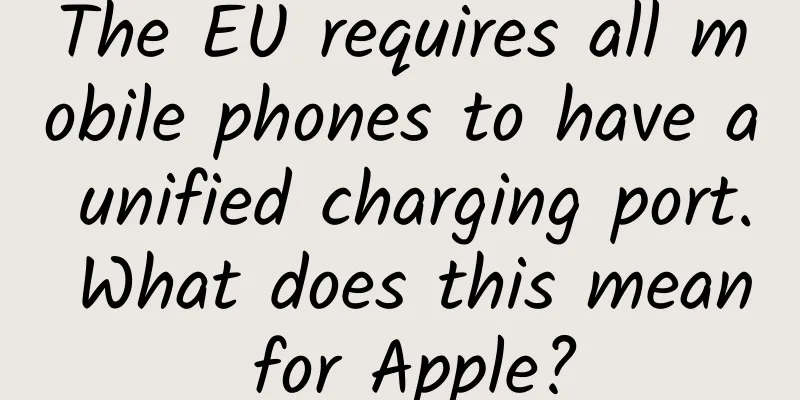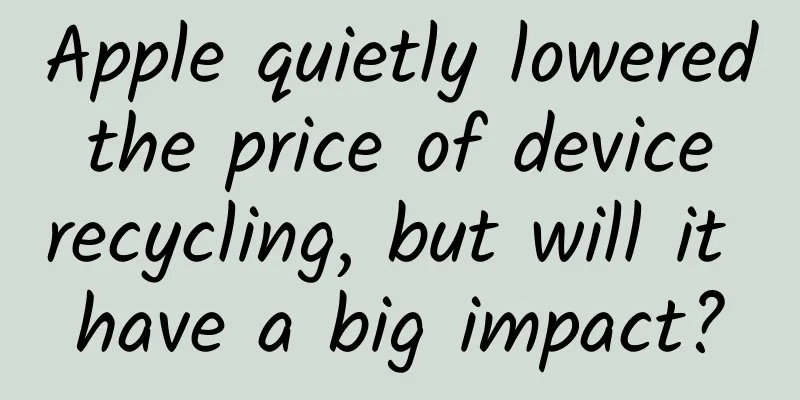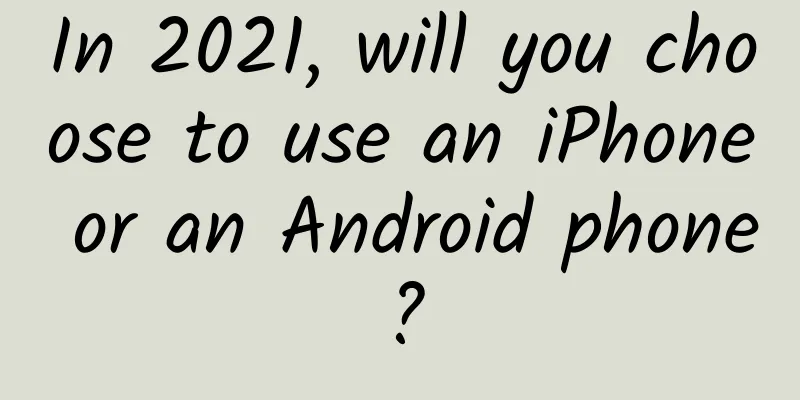The EU requires all mobile phones to have a unified charging port. What does this mean for Apple?

|
Despite Apple's obstruction, the European Parliament voted overwhelmingly in January to pass new rules to unify standards for mobile devices across the European Union. Foreign media macrumors explores what form the EU may eventually take to push manufacturers to improve, and how these laws affect Apple device users in Europe and other regions. What exactly is the EU calling for? In order to reduce costs, reduce electronic waste and make life easier for consumers, members of the European Parliament (MEPs) want to take "binding measures" to ensure that mobile phone chargers are uniformly suitable for all mobile phones, tablets and other portable devices. According to a 2019 EU study evaluating commonly used chargers for portable devices, nearly one in five respondents said that different charger standards caused them a lot of trouble. These problems include incompatible chargers between devices, different charging speeds between different chargers, and having to have multiple chargers to meet all needs. Therefore, the EU claims that by agreeing on a common charger standard, it will end the chaotic charger standards and the generation of 51,000 tons of electronic waste each year. According to a briefing on the European Parliament's website, the recent 582-40 vote was overwhelmingly in favor of common standards, while the European Commission's previous approach of merely "encouraging" tech companies to develop standardized solutions "did not meet the objectives of the co-legislators." How was this practice previously implemented? The European Commission's efforts to create a single standard for smartphones have lasted more than a decade. In 2009, the Commission estimated that there were 500 million mobile phones in all EU countries. Studies have found that the chargers used often differ depending on the manufacturer and model, with more than 30 different types of chargers on the market. To unify standards, the European Community negotiated a 2009 memorandum of understanding that included 14 technology companies, including Apple, Samsung, Nokia and other well-known smartphone makers. Under the memorandum, mobile phone manufacturers agreed to adopt the EU's unified micro-USB interface standard for smartphone chargers, allowing charging functions that are fully compatible with mobile phones to be put on the market. The plan at the time was that phone manufacturers would sell new phones with micro-USB chargers for a period of time, after which the phones and chargers would be sold separately so that customers who already had chargers could continue to use their existing chargers. There was considerable speculation as to whether Apple would be able to meet the requirements of the micro-USB standard, and at the time, the company used a proprietary 30-pin dock connector that was compatible with the iPhone, iPad, and iPod touch. However, the memo actually gave Apple a workaround: For phones that didn't have a USB micro-B port, the terms of the agreement allowed an adapter to be used. Apple did just that. In 2012, Apple introduced the iPhone 5 with a new Lightning port, eliminating the old 30-pin connector, and also provided a separate Lightning-to-micro USB adapter with the new phone to comply with the 2009 EU agreement. Therefore, Apple doesn't need to give up its proprietary interface in the end to achieve the same result as the memo. Why was the 2009 memo considered a failure? A progress report provided by the signatories of the memorandum in February 2013 showed that by the end of 2012, 90% of new devices launched by the signatories and other manufacturers supported the unified charging interface. But the reason why this statistic is so high is that it also includes Apple's roundabout way of supporting it. A member of the European Commission noted: "The perception of citizens and the European Parliament is that a universal charger is not happening at all. Look at what we find in the most popular smartphones (i.e. iPhones). Future memorandums must make clear the terms in their results. We cannot accept adaptations." This progress frustrated the European Commission, and in 2014 the European Parliament passed the Radio Equipment Directive, which called for “the redevelopment of a common charger.” The directive gave the European Commission the power to directly set technical standards through delegated acts—in this case, legislative acts that implement EU rules. In other words, they want to change the previous "recommendation" to "mandatory". By 2016, the Commission acknowledged that the micro-USB connector was obsolete and USB-C had become the de facto standard for most devices. The memorandum drafters informed the Commission that all manufacturers, except Apple, were prepared to sign a new agreement to retain the USB-C-only option. Why is Apple against using a unified charger? In 2016, Apple supported the adoption of USB-C as a connector but remained opposed to conforming to the standard on the devices themselves. The company argued that conforming to the standard on the device side would cost it up to €2 billion and hinder innovation, mainly because the iPhone was too thin to accommodate a USB-C port. Apple even commissioned a study from Copenhagen Economics outlining the harm a mandatory switch to a universal charger could cause to consumers. The study concluded that if the unified charger became law, consumers would lose 1.5 billion euros, with more than 13 million euros in environmental effects (they mean that users of the unified charger will have to abandon the old interface-compatible cables, docks, etc. that have been used for many years). The study claims that 49% of EU households rely on different types of chargers, but only 0.4% have experienced any major problems. Apple's stance on the issue left the Commission in a stalemate, but in 2018 the Commission agreed to continue working with manufacturers in order to reach an appropriate voluntary agreement. A year later, the Commission concluded that its previous voluntary approach and the new memorandum still allowed manufacturers to use adapters with proprietary solutions and would not lead to full harmonization of chargers. Where is the EU heading? In response to the European Commission's 2019 impact assessment of common chargers, Apple said that regulations forcing all smartphones to use the same charging port would "stop innovation," "be bad for the environment," and "cause unnecessary disruption to customers." Apple believes that in addition to the ecosystem of accessory and device manufacturers that use the Lightning connector, there are more than 1 billion Apple devices that use the Lightning interface. The EU's forced unification will force users to waste previous devices, chargers, or items such as docking stations, which will cause unprecedented electronic waste and bring great inconvenience to users. Being forced to disrupt this huge customer market will have consequences far beyond the Commission's stated goals. The EU Parliament voted overwhelmingly in favor of standardization in January 2020, but it is unclear how it plans to implement it. The Commission's impact assessment proposes several possible options for the proposed legislation, including various permutations from the device side to the charger side:
Of course, wireless charging was considered as a potential solution, but the Commission concluded that it was a "primitive technology" with an energy efficiency of about 60%, far lower than the nearly 100% efficiency of wired charging. Overall, the Commission's impact assessment suggests that the most effective approach is to combine option 1 (unified interface) with option 4 (interoperable external power sources). If the Commission agrees with this recommendation, Apple will have to change its interface. But it remains to be seen whether the European Commission will accept the recommendations of its impact assessment and incorporate them into EU law.
Will this initiative work? The EU initiative aims to limit the variety of charger interfaces on the market without hindering future technological innovation. By standardizing chargers, it hopes to reduce prices and improve quality, thereby reducing the presence of counterfeit chargers and improving user safety. It is also expected to reduce/minimize the generation of e-waste by reducing the need to purchase different types of chargers and by enabling the reuse of existing chargers. The impact assessment argues that this will also increase consumer convenience, as users will be able to charge not only their mobile phone, "but potentially other devices as well using a single cable (and charger), and will have the option of purchasing a phone without a charger". It is unclear whether Apple will make changes in global markets to comply with European regulations. Regardless of the outcome of the proposed legislation, all signs indicate that Apple is currently standing firm and will continue to lobby against the EU's intention to regulate the market. After the recent parliamentary vote, Apple said: "The industry is already using USB Type-C through connectors or cable assemblies, so we do not believe regulation is necessary. This includes Apple's USB-C power banks, which are compatible with all iPhone and iPad devices. This approach is cheaper and more convenient for consumers to charge a wide range of portable electronics, encouraging a return to chargers and allowing innovation." |
<<: Folding phones need to make these five changes to be accepted by the public
Recommend
Is heavy H5 really good?
[[144530]] The effect is not much different from ...
VR helps Mango TV's "Super Girl" technology makes the content more vivid
For the technology circle, VR can be regarded as ...
Is the Apple Watch a failure so far?
[[145129]] According to media reports today, anal...
What exactly is the "poison of the century" that makes people "terrified"?
Produced by: Science Popularization China Author:...
How can we as a self-media person receive and complete more orders?
In general, I think, first of all, you must dare ...
The clearest and most comprehensive method for writing operation and promotion plans!
Operations are basically a process of constantly ...
To do content operation, you must master these 3 core capabilities
1. What is content operation ? 2. Judgment Abilit...
Lao Fu - Literary Girl Drawing Class
: : : : : : : : : : : : : : : : : : : : : : : : : ...
How to use Xiaohongshu for promotion and marketing?
Xiaohongshu is very popular now, and major beauty...
A different way to promote APP: Analysis of the operation strategy of "Youlin"!
The author of this article is Tian Zuo, who has b...
Ten years after the iPhone, I started watching Apple conferences again
On January 9, 2007, Steve Jobs launched the groun...
Tencent issues preliminary non-binding acquisition offer to Sogou (full text attached)
Tencent issues preliminary non-binding acquisitio...
Case study of advertising in the circle of friends in the home improvement industry
This article shares with you a case study of adve...
How does the self-media economy achieve IP creation and traffic monetization?
This is an era of the Internet, and even more so ...
These 4 WeChat settings may leak your privacy every day, turn them off quickly
When we use WeChat, we often have people who have...









